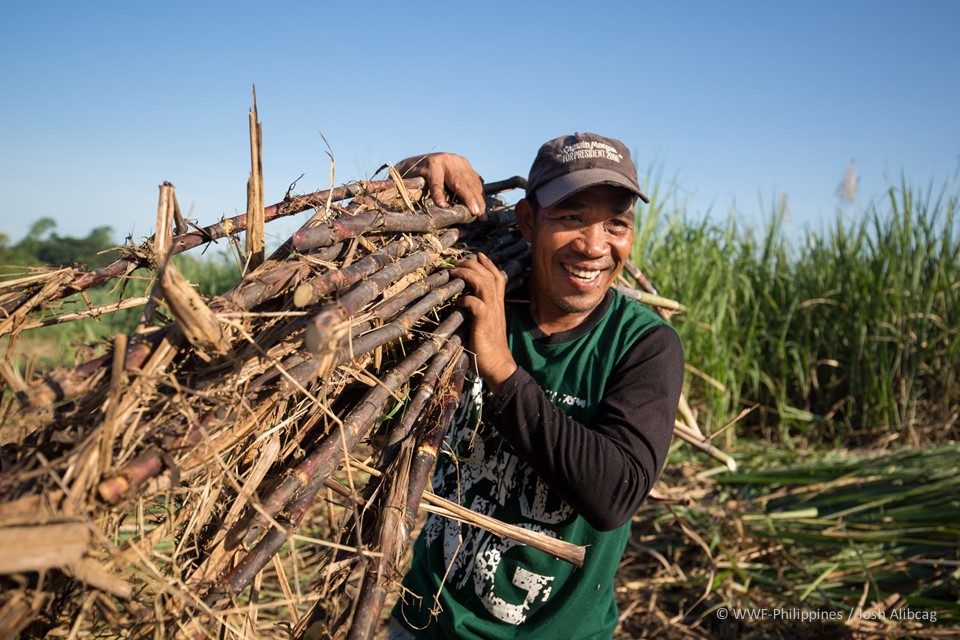Recent WWF-Philippines Study Suggests New Planting Season, Farming Practices for Sugar Cane in the Face of Changing Climates
November 2019

A sugarcane farmer carries his harvest over his shoulder in the Ara-al-Najalin-Marayo Watershed, Negros Occidental.
Photograph © Josh Alibcag / WWF-Philippines
November, 2019 – A recent study from the World Wide Fund for Nature (WWF) Philippines has recommended a shift in planting seasons and an emphasis on irrigation and block farming in order for farmers to mitigate the effects of the current climate crisis.
The study cross-examined projected sugarcane productivity with increases in carbon dioxide and shifts in rainfall patterns in the Ara-al-Najalin-Marayo Watershed, Negros Occidental. The study made use of historical data on sugarcane yields and rainfall levels, with considerations given to El Nino and La Nina impacts.
Host to 19,535 hectares of sugarcane farmland, the Ara-al-Najalin-Marayo Watershed proved to be an effective site for crop research. Projections from the Philippine Atmospheric, Geophysical and Astronomical Services Administration (PAGASA) predict an increase in regional temperatures of around 1.5 degrees Celsius.
Among the main recommendations of the study is a shift in the sugarcane planting season from May to March. According to the study, a shift in planting dates from May to March would result in a yield increase of 13%. An increase in atmospheric carbon dioxide is expected to further increase these yields by 8%, resulting in a 21% improvement in crop productivity.
The study also revealed a need for irrigation efficiency in order to maximize changes in climate without major increases in costs for farmers. Contiguous farms with uniform irrigation practices could help farmers match these changes. The study suggests further cost-benefit analyses to determine what irrigation schemes would work best.
“This is a real economic issue, social. The livelihoods of many people rely on sugarcane. There’s a bigger role for the government to really ensure that we’re protecting this industry, and part of that is a better understanding of risk, better planning, and better understanding of these issues on the part of farmers,” says WWF-Philippines Sustainable Food Systems Program Manager Muneer Hinay. Sugar is among the Philippines’ major export crops, and the country ranks 9th in sugarcane production. The industry employs approximately 5 million workers locally.
“The dry spells of 2016 and 2019 in the province of Negros Occidental resulted in damage to agriculture amounting to P143 million and P60 million, respectively. The effects of climate change - higher temperatures and drier conditions – are not a distant future, but a present phenomenon,” says WWF-Philippines Sustainable Finance Chief of Party Edgardo Tongson. Through its AgriClima project, WWF-Philippines has worked to improve climate resiliency of sugarcane farmers in Negros Occidental since 2017.
“Crop models coupled to downscaled climate models can pave the way in delivering science-based, cost-efficient and effective solutions that are particularly important to farming communities,” added Tongson.
For more information, please contact:
Ms. Pam Luber
Communications Manager
pluber@wwf.org.ph
Mr. Edgardo Tongson
Chief of Party, Sustainable Finance
etongson@wwf.org.ph
Mr. Muneer Hinay
Project Manager, AgriClima
mhinay@wwf.org.ph
